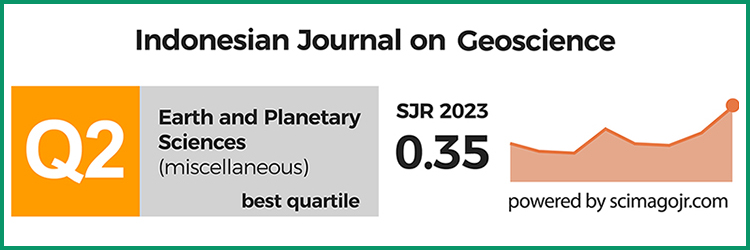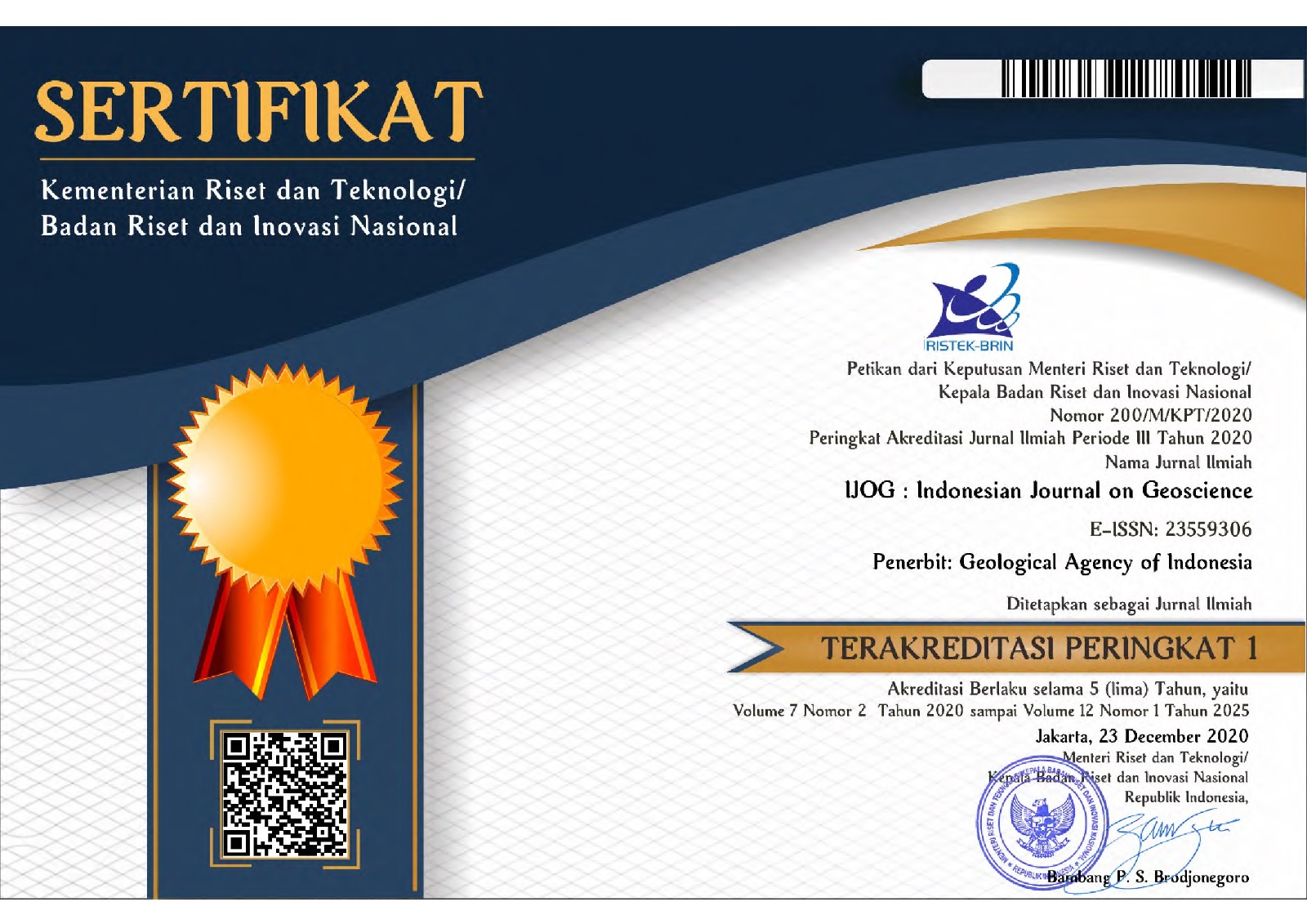Devastating landslides related to the 2002 Papandayan eruption
DOI:
https://doi.org/10.17014/ijog.1.2.83-88Keywords:
Papandayan, earthquakes, eruption, hydrothermal, alteration, landslidesAbstract
https://dx.doi.org/10.17014/ijog.vol1no2.20063
Papandayan is an A-type active strato volcano located at some 20 km SW of Garut or about 70 km SE of Bandung the capital city of West Java Province. Geographically, the summit of this volcano lies at the intersection between 07º 19’ 42” S and 107º 44” E. The 2002 Papandayan eruption was preceded by two felt earthquakes, 8 times of A-type volcanic earthquakes and 150 times of B- type volcanic earthquake. These events were followed by a phreatic eruption that took place on 11 November at 16.02 local time. Field observation shows that the summit region, mainly around the craters consists of rocks that have hydrothermally altered to yield clay rich material. This clay rich material covers most of the crater fl oors and the crater rim. Mount Nangklak that forms part of the rim also contains a lava plug from the Old Papandayan volcano. This mountain is covered by fi ne grained, unconsolidated material, and altered rocks. Much of this altered rocks coincides with solfataric and fumarolic activities of 80 to > 300°C. The summit area also contains high discharge of water either originating from the springs or surface water.
The increase in seismicity, the fi ne-grained hydrothermal altered rocks, and the existence of some faults that pass through the summit region might have weaken the stability of the summit area. As the result, a landslide occurred on the north fl ank of Mount Nangklak where the landslide material blocked the upper course of Cibeureum Gede River. This landslide material had formed big mudfl ows that caused several houses of fi ve villages were partly burried, some bridges were devastated and several hectares of cultivated land were damaged.
References
Asmoro, P., Wachyudin, D., and Mulyadi, E., 1989. Geological Map of Papandayan volcano, Garut, West Java. Directorate of Volcanology, Bandung.
Frank, D., Lubis, H., Casadevall,T.J., Glicken, H., and Suparman, 1987. Influence of hydrothermal alteration on volcanic hazards at Papandayan volcano, West Java, Indonesia. Hawaii Symposium on How Volcanoes Work, 1987. Abstract Volume, p.80.
Hadisantono, R.D., Sumpena, A.D., and Abdurachman, E. K., 2002. Banjir lumpur pada letusan Papandayan, Nopember 2002 - Mei 2003. Internal Report, Directorate of Volcanology and Geological Hazard Mitigation.
Kusumadinata, 1979. Data dasar Gunungapi Indonesia. Direktorat Vulkanologi. Bandung.
Mazot, A. and Bernard, A., 2003. The hydrothermal system of Papandayan volcano and the November 2002 eruption: CO degassing, fluid geochemistry and mineralogy of ejecta. Journal of Volcanic Activity in Indonesia, 1, p 129-152; Special Edition. Directorate of Volcanology and Geological Hazard Mitigation.
Purbawinata, M.A., Wirakusumah, A.D., and Pratomo, I., 2004. Directed blast and debris avalanches of 2002 Papandayan eruption, West Java, Indonesia. Journal of Volcanic Activity in Indonesia, 1, p.103-114; Special Edition. Directorate of Volcanology and Geological Hazard Mitigation.
Wahyudin, D., 2004. Geologi Gunungapi Papandayan dan Potensi Bahan Galian. Journal of Volcanic Activity in Indonesia, 1, p.49-60; Special Edition. Directorate of Volcanologi and Geological Hazards Mitigation.
Zaruba, Q. and Mencl, V., 1967. Landslides and their control. Elsevier, Amsterdam-London-New York in co edition with Academia, Publishing House of the Czechoslovak Academy of Sciences. Prague 1969.



















